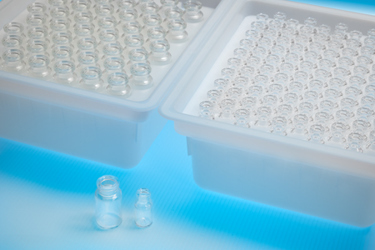Viral Vector Based Gene Therapy Drug Products: Key Considerations For Choosing The Right Primary Container
By Krishnendu Khan, Sr. Scientist, Advanced Therapies, and Jim Thompson, Director, R&D, Daikyo Development & PPG

Viral vector-based gene therapy is a promising treatment for genetic disorders and diseases. However, the choice of primary container system is crucial for ensuring the stability and safety of the therapeutic product. Container closure integrity (CCI) is essential to maintain the integrity of the drug product.
Extractables and leachables are substances that can migrate from packaging materials into the drug product, potentially affecting its quality and safety. Compatibility studies between the drug formulation and vial materials can help identify potential interactions. Factors such as the properties of the vial material, contact time, temperature, pH, ionic strength, and drug concentration can influence the extent of surface adsorption. The adsorption of drugs to the packaging vial's surface can impact the potency, efficacy, dosage, and safety of the drug product.
Using vials designed to minimize drug-material interaction can help prevent the generation of unwanted products and ensure drug potency and efficacy. The Crystal Zenith (CZ) vial, a cyclic olefin polymer (COP) based vial, is a preferred choice for viral vector packaging. It has low adsorption and chemical reactivity, as well as excellent CCI. The CZ vial-based containment system has been successfully used for several approved viral vector-based gene therapy drugs. The Nested Vial In Tub (NVIT) packaging format for CZ vials offers broad compatibility with various fill/finish equipment.
In this article, explore the major considerations for an ideal primary container for viral vector-based gene therapy drug products and the existing and new solutions in this space..
Get unlimited access to:
Enter your credentials below to log in. Not yet a member of Drug Delivery Leader? Subscribe today.
